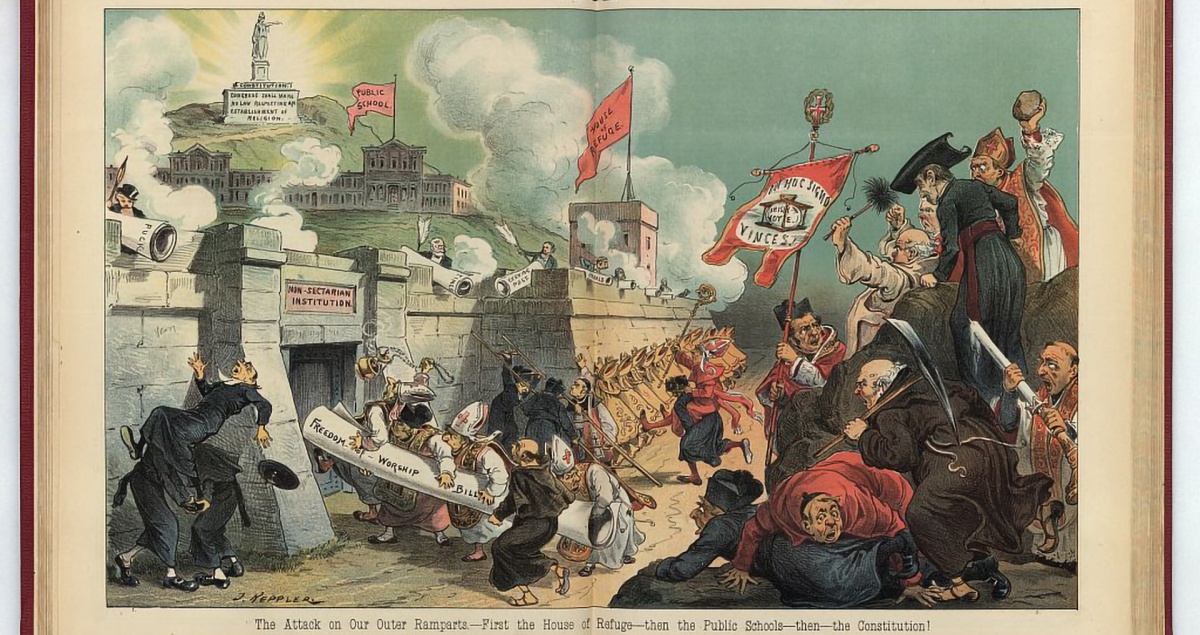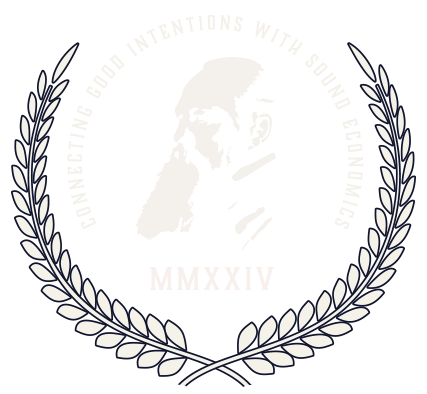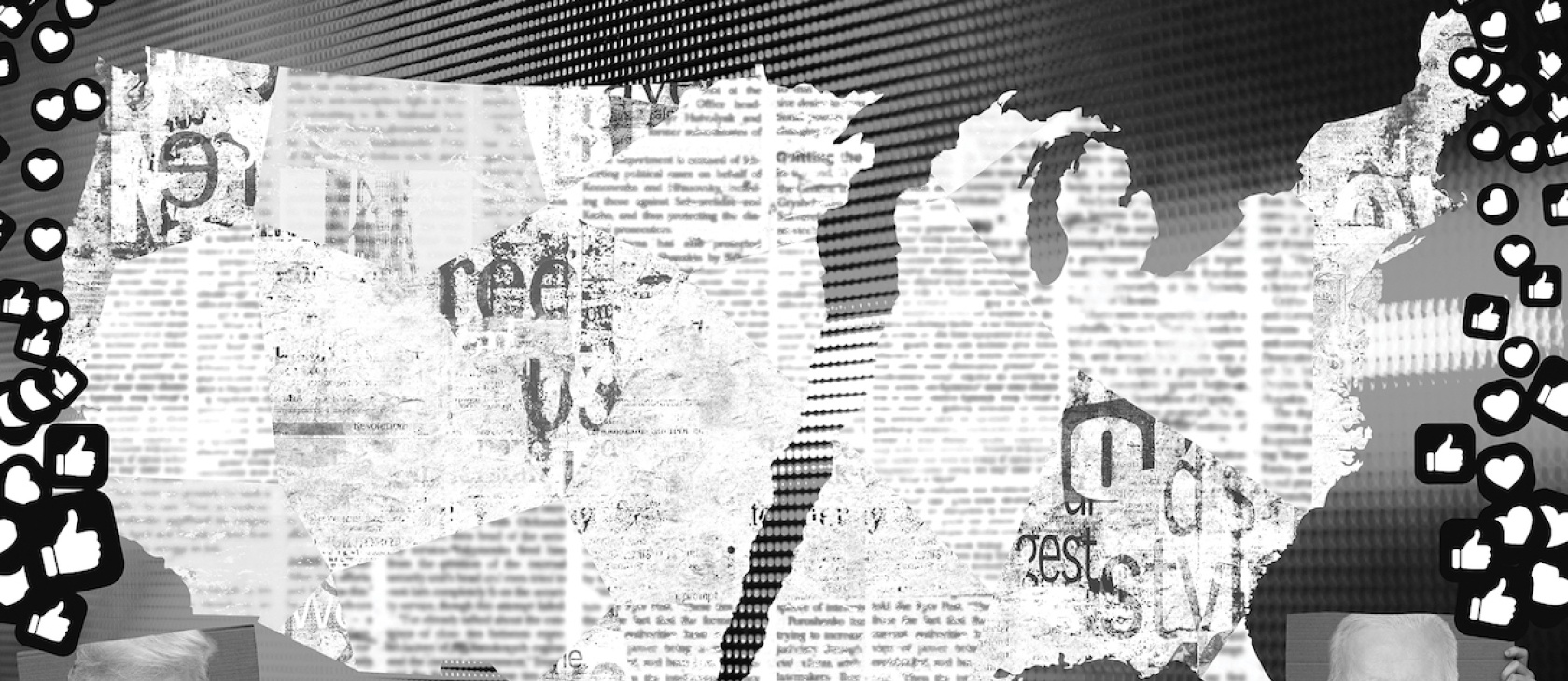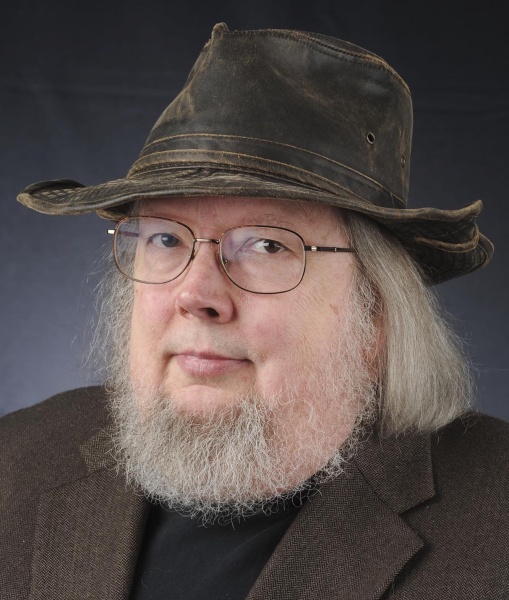With the 2016 presidential election looming, the New York Times published a journalism manifesto that was disguised as a mere political commentary.
If coverage by “mainstream” media of religion, values, culture, and education seem hostile to the beliefs of many Americans, there’s a reason for that. There’s been a paradigm shift in how journalism is done, and for whom.
The candidate’s name was in the headline, but the implications of the August 7, 2016, essay “Trump Is Testing the Norms of Objectivity in Journalism” included coverage of a wide range of subjects linked to the hopes, fears, and beliefs of Americans who felt driven to vote for him.
The big idea—never openly stated—was that the famous motto of America’s most powerful newspaper, “All the News That’s Fit to Print,” could be shortened to “All the News That Fits.” Writer-at-large Jim Rutenberg opened with this salvo:
If you’re a working journalist and you believe that Donald J. Trump is a demagogue playing to the nation’s worst racist and nationalistic tendencies, that he cozies up to anti-American dictators and that he would be dangerous with control of the United States nuclear codes, how the heck are you supposed to cover him?
Because if you believe all of those things, you have to throw out the textbook American journalism has been using for the better part of the past half-century, if not longer, and approach it in a way you’ve never approached anything in your career.
This raised a big question, he added, for journalists plunging into advocacy journalism: “Do normal standards apply? And if they don’t, what should take their place?”
Questions such as these have obvious implications for coverage of American politics, especially since most American journalists see the world—even issues linked to morality, culture, and faith—through a political lens. After all, politics is real. Religion? Not so much.
But these debates have moved beyond the heated media-bias wars in recent decades. The ground under American journalism is moving and that affects all of American life, especially First Amendment issues tied to free speech, freedom of association, and religious liberty.
This earthquake is linked to the wave of technological innovations that have forced all kinds of companies, including news organizations, to change their products in an attempt to survive in the digital age. The key is a process familiar to anyone who has surfed the internet. The goal is to convince users to click “like,” “forward,” “tweet,” “post,” or, ultimately, to pay money to receive more content of this kind.
This raised a big question, he added, for journalists plunging into advocacy journalism: “Do normal standards apply? And if they don’t, what should take their place?”
This preaching-to-the-choir business model works with cute kittens and heroic dogs. It works with emotional videos of soldiers returning home and surprising their loved ones, as well as those of rainbow-haired teachers preaching to elementary school students about gender.
This sequence works—on different audiences—with “news” about the verbal and physical stumbles of President Joe Biden or election-denying sermons by former President Trump. It works with reports about environmental apocalypse or the potential for nuclear war in Ukraine. It works when federal agents arrest grandparents protesting at abortion clinics, as well as when there are few, if any, arrests in cases involving activists vandalizing pro-life churches or fire-bombing crisis-pregnancy centers. It works when some churches close, while others stay open, during a global pandemic. It works when some parents choose to take radical actions in response to rapid gender dysphoria symptoms in their children, while others risk clashes with state authorities while opposing treatments of this kind.
These changes provide some of the digital DNA in conflicts that are tearing America apart. Politicians, parents, pastors, and plenty of other people are struggling to understand what is happening in their lives while turning to Facebook, Twitter, YouTube, Instagram, TikTok, Parler, BitChute, Gab, Gettr, Rumble, Telegram, and Truth Social. And there are darker corners of this world, such as 4chan and the “Dark Web.” And never forget this crucial journalism reality: Opinion writing is cheap, while hard-news content is expensive.
There is plenty of money to be made, but one reality looms over those trying to stay in business—researchers believe that two-thirds of ad dollars in the American marketplace head straight to Big Tech powerhouses such as Facebook, Google, and Amazon. Try operating an ordinary local or national newsroom when competing with that.
Consumers insist they are not happy about the results, but researchers note that they continue to build their own personal information bunkers using niche-news providers.
Meanwhile, a 2022 Pew Research Center study found that only 44% of journalists think “every side of an issue deserves ‘equal coverage,’” while citizens at large support balanced coverage to the tune of 76%. Young journalists were the least likely to support balanced coverage.

How will these trends affect the future? The well-known First Amendment lawyer and evangelical pundit David French described the crisis in his book Divided We Fall: America’s Secession Threat and How to Restore Our Nation. The bottom line: Americans are divided by their choices in news and popular culture, choosing to live in protective silos of digital content. America remains the developing world’s most religious nation, yet its secularized elites occupy one set of zip codes, while most religious believers live in another. These armies share no common standards about “facts,” “accuracy,” or “fairness.”
“It’s time for Americans to wake up to a fundamental reality: the continued unity of the United States cannot be guaranteed,” wrote French. At this moment, “there is not a single important cultural, religious, political, or social force that is pulling Americans together more than it is pulling us apart.”
The American Model of the Press
When media-reporter Ben Smith arrived at the New York Times, he immediately grasped that he had signed on with an institution that was experiencing a revolution.
“I arrived there a bit skeptical,” wrote Smith, in an essay at his Semafor website. “I quickly came to admire the deep commitment my colleagues had to the institution, and the durability of its folkways. But I also thrived in part because I heeded a colleague’s warning before I started: ‘Do not, under any circumstances, try to change anything.’”
But change was on the way, with internet realities forcing Times managers to veer into a business model in which selling consumers content, in a variety of forms, was the key to survival and then explosive growth. Questions about the old divide between advertising and editorial content, which journalists have long called the separation of church and state, were replaced by questions about the importance of pleasing faithful readers—a loud, fervent online flock.
Smith said a former Times executive stressed that this particular newspaper is “a business wrapped around a church.”
Using that metaphor, it’s easy to see that today’s Times congregation is demanding doctrinal changes in the content of this journalism church. They want the editors, to use a Bible Belt expression, to “preach to the choir”—or suffer the consequences on Twitter and in other social-media sanctuaries.

Basically, the world’s most influential newspaper is moving away from the old free-speech liberalism of what historians call the “American model of the press,” with little public commentary about the consequences of this strategic move, other than the occasional blast of candor such as the Rutenberg essay about fighting Trump. The Gray Lady appears to be swinging back to an older European Model of the Press offering news carefully crafted to please a specific audience or, at the very least, to avoid offending it. These European-model newspapers were once defined by language, politics, economics, religion, and even race.
The key: In this older model, journalists work in newsrooms that openly state their biases, letting readers know what to expect. While journalists in these newsrooms are expected to be accurate, there is no need for balanced coverage and, often, displays of respect when dealing with opponents. This shapes the content of the news. Some causes are logical and virtuous, while others are stupid or even dangerous. Once again, this affects issues of faith, families, education, and popular culture—not just partisan politics.
This is radically different from the American Model of the Press, with its stress on letting readers make up their own minds on controversial issues after reading balanced coverage of competing points of view. Journalists working according to this model strive to follow a concept of objectivity that is defined not as a “my mind is blank” philosophy but in terms of professional standards seeking accuracy, balance, fairness, and respect.
How do journalists know, in the American model, that they are getting the job done? Journalists at the Poynter Institute have long used a helpful term—“stakeholders”—in these discussions. They define a “stakeholder” as someone whose life will be directly impacted by a particular news story. When stakeholders keep saying coverage is inaccurate, that’s bad. When stakeholders consistently say coverage is biased, it’s important to hear them and consider whether they are speaking the truth.
As Dean Baquet told National Public Radio in 2016, while discussing the election: “We don’t get religion. We don’t get the role of religion in people’s lives.”
Meanwhile, how do journalists in the digital-market European model know they are getting the job done? That’s easy: When readers are happy.
Clashing Liberal Orthodoxies
For readers who have paid close attention to coverage of religion and culture in recent decades—which I have done as a syndicated columnist, media professor, and media critic at GetReligion.org—it’s clear that evolving doctrines at the Times are typical of a wider revolution.
But discussing events at the Times deserve special attention because choices made in that company influence so many elite reporters, editors, and news-business managers in other news organizations. What happens at the Times will eventually affect the Associated Press, for example, leading to changes in local and regional newspapers from coast to coast.
Religious faith is part of that equation. As then-Times editor Dean Baquet told National Public Radio in 2016, while discussing the election: “We don’t get religion. We don’t get the role of religion in people’s lives.”
Thus, here is a three-act summary of some key moments in an ongoing journalism passion play in America’s most powerful newsroom.
Act I: “The orthodoxy of no orthodoxies”
In 2004, New York University journalism professor Jay Rosen published a provocative PressThink essay under this headline: “Journalism Is Itself a Religion,” with this caption, “A Theological Investigation.” He noted that much of the debate about the ethics and even morality of modern journalism, or even what he called the “priesthood of the press,” revolves around a specific question: “What results from the ‘relative godlessness of mainstream journalists?’” This has led to fierce debates about the quality of religion-news coverage in the press, or the lack of accurate, informed coverage.

All this led Rosen to discuss a famous New York Times Magazine story in 1999 about the religious beliefs of a radical anti-abortion activist. It included these words from reporter David Samuels: “It is a shared if unspoken premise of the world that most of us inhabit that absolutes do not exist and that people who claim to have found them are crazy.”
Critics, Rosen noted, thought this declaration that there are no absolute moral truths sounded like “dogma.” It was also clear that “the world that most of us inhabit” consisted of zip codes close to the Times, if not the newsroom itself. To illustrate this, he turned to one of my national “On Religion” columns, in which I interviewed William Proctor—a Harvard Law graduate and the former legal affairs reporter for the New York Daily News. Proctor is the author of the 2000 book The Gospel According to the New York Times.
Rosen quoted the following: “Critics are wrong if they claim that The New York Times is a bastion of secularism. … In its own way, the newspaper is crusading to reform society and even to convert wayward ‘fundamentalists.’ Thus, when listing the ‘deadly sins’ that are opposed by the Times, [Proctor] deliberately did not claim that it rejects religious faith. Instead, he said the world’s most influential newspaper condemns ‘the sin of religious certainty.’”
This “orthodoxy of forbidding all orthodoxies,” noted Rosen, attacked transcendent truth claims from traditional religious faiths. Here is another bite from my column:
“Yet here’s the irony of it all. The agenda the Times advocates is based on a set of absolute truths,” said Proctor. Its leaders are “absolutely sure that the religious groups they consider intolerant and judgmental are absolutely wrong, especially traditional Roman Catholics, evangelicals and most Orthodox Jews. And they are just as convinced that the religious groups that they consider tolerant and progressive are absolutely right.”
How does this affect coverage of the lives and beliefs of ordinary Americans?
ACT II: Former Times editor Bill Keller hints at changing times
Soon after stepping down as the editor of the New York Times, Bill Keller traveled to Austin, Texas, for a 2011 forum at the Lyndon Baines Johnson Library. To no one’s surprise, he was asked if his newspaper could be called “liberal.”

Keller claimed that Times professionals, during his tenure, worked hard to be balanced and fair when covering politics. But the same rules didn’t apply, he said, when covering matters of morality, religion, and social change. That’s when journalists viewed the world through what he described as a sophisticated, intellectual, tolerant lens.
“We’re liberal in the sense that ... liberal arts schools are liberal,” he said. “We are liberal in the sense that we are open-minded, sort of tolerant, urban. Our wedding page includes—and did even before New York had a gay marriage law—gay unions. So, we’re liberal in that sense of the word, I guess. Socially liberal.”
Asked if the Times favored the political left, he added: “Aside from the liberal values, sort of social values thing that I talked about, no, I don’t think that it does.”
Note these crucial words: “aside from.” The problem is that hot-button social issues have, after Roe v. Wade, dominated American politics, especially in elections linked to seats on the U.S. Supreme Court. According to Keller, his newsroom did old-school journalism—except when dealing with issues such as abortion, euthanasia, sexuality, marriage, family, gay rights, education, cloning, and other sensitive matters that are inevitably linked to religion. That’s all.
Again, journalists tend to see religious issues such as these through the lens of politics. Thus, Keller—a self-identified “crashed Catholic”—once wrote a column arguing that believers, especially evangelical Protestants and conservative Catholics, should face special scrutiny when seeking higher office. After all, he argued, if a candidate believes “space aliens dwell among us,” shouldn’t voters know if beliefs of this kind will shape public policies?
This worldview may make it hard to cover news outside New York City. Keller noted that columnist Daniel Okrent once “rightly scolded us for sometimes seeming to look down our urban noses at the churchgoing, the gun-owning and the unlettered.”
ACT III: The exit of Liz Spayd, the public editor who asked hard questions
Former religion-beat pro Kelly McBride was not amused when she heard that the New York Times had pushed public editor Liz Spayd out the door after her candid and often scathing essays following Trump’s victory.
“No, New York Times! Not the public editor! Why, with trust in news organizations at an all-time low, would you cut the one position dedicated to holding your journalists to account in public? We need you to reconsider,” she wrote in a 2017 online essay written as the Poynter Institute’s journalism ethics specialist. “We know you can pay for it. Thanks to a big increase in subscribers (whom the public editor represents!) your digital revenues are at an all-time high.”
A former leader of the Columbia Journalism Review, Spayd was an old-guard liberal charged with defending essential standards in the newsroom. She opened one early piece, entitled “Why Readers See The Times as Liberal,” with this overture:
I have been here less than a month, but already I’ve discovered something that surely must be bad for business if your business is running The New York Times. It comes via the inbox to the public editor, from people like Gary Taustine of Manhattan, who writes: “The NY Times is alienating its independent and open-minded readers, and in doing so, limiting the reach of their message and its possible influence.”
Another reader from California went further, accusing Times journalists of trying to sway public opinion: “I never thought I’d see the day when I, as a liberal, would start getting so frustrated with the one-sided reporting that I would start hopping over to the Fox News webpage to read an article and get the rest of the story that the NYT refused to publish.”
It’s important to note that Spayd was stressing complaints from Times readers, not conservative trolls or religious conservatives. Her concerns focused on whether Times leaders were refusing to listen to crucial voices in public discourse and, thus, were missing many big stories in American life—period.
The big question: Was the New York Times still trying to cover news in America as a whole, or merely zip codes in its subscriber base? This led to a blunt Spayd column with this headline: “Want to Know What America’s Thinking? Try Asking.”
Here’s another important comment, as quoted by Spayd. A Houston reader wrote:
Now that the world has been upended and you are all, to a person, in a state of surprise and shock, you may want to consider whether you should change your focus from telling the reader what and how to think, and instead devote yourselves to finding out what the reader (and nonreaders) actually think. [sic]
Yes, Trump’s rhetoric, noted Spayd, was an essential element of election coverage. But Trump became the only “conservative” story in the elite press—with editors ignoring many of the moral, cultural, and religious concerns of voters who voted for him or against Democrat Hillary Clinton. The politics of Trump “drowned out the kind of agenda-free, deep narratives that could have taken Times readers deeper into the lives and values of the people who just elected the next president.”
There’s that journalism doctrine question, again. Was the Times team willing to listen to voices outside the newsroom or the loud social-media choir of its subscribers? That question appears to have been too much for Times management. Spayd had to go.
The Value of Transparency
The revolution taking place inside the New York Times can be seen—often in more subtle forms—in many other newsrooms, from the Associated Press to USA Today and NPR, from the Washington Post to the Los Angeles Times. In broadcast journalism, it’s easy to understand the niche-media appeal of MSNBC on the left and Fox News on the right.
Is oppression in Ukraine newsworthy but not the massacre of Christians in Nigeria?
Meanwhile, CNN has faced a ratings crisis in a world in which there were other storylines to cover now that Donald Trump was no longer in office. Management attempted, with a few strategic personnel changes, to suggest that CNN wanted to reclaim its old motto, “The most trusted name in news,” with programing for all Americans.
CNN’s future mattered to millions of news consumers, wrote Tom Jones, senior media writer at the Poynter Institute. He quoted a Chicago Tribune editorial, noting: “CNN is hewing toward the center? That’s good for our democracy. … Granted, not every issue has two sides … but most of them do.”
There was a problem with that call for balance, argued Jones: “All Americans aren’t reasonable enough or willing to accept what’s true.”
And there’s the rub. For millions of Americans, the “truth” is determined by whatever news sources they choose to embrace and support with their time, money, and clicks. In this America, there is no need for citizens to tolerate the views of those considered bigoted, ignorant, dangerous, or intolerant. This is true with debates in pews, as well as ballot boxes.
This shift in the marketplace has impacted coverage, or the lack of coverage, of many issues, including religion. Is violence in public life bad or is it acceptable when practiced by sympathetic activists? Is oppression in Ukraine newsworthy but not the massacre of Christians in Nigeria? Do the First Amendment rights of prison inmates matter but not those of bakers, florists, and website designers? Do progressive parents have the right to take their children to drag queen story hours, while conservative parents struggle to protect their children from educational materials containing similar themes and images that they believe attack their faith?
Under the American Model of the Press, journalists were asked to produce coverage of hot-button stories such as these with an emphasis on balance, fairness, accuracy, and “objectivity.” The goal was to provide information that could be trusted by as many readers as possible, which was good for advertising and the bottom line.
That was then. What happens now? In their 2014 book, The New Ethics of Journalism, Kelly McBride of the Poynter Institute and Tom Rosenstiel of the American Press Institute focused on journalists seeking “transparency” as opposed to a “false omniscience” or mandatory demands for “objectivity.”
In an updated Poynter credo, they urged journalists to “show how the reporting was done and why people should believe it. Explain your sources, evidence and the choices you made.” This led to their key guideline for the Internet age:
Clearly articulate your journalism approach, whether you strive for independence or approach information from a political or philosophical point of view. Describe how your point of view impacts the information you report, including how you select the topics you cover and the sources that inform your work.
So far, newsroom leaders have avoided making clear declarations about the worldviews that shape their coverage, says journalism historian Marvin Olasky, author of numerous books such as Telling the Truth: How to Revitalize Christian Journalism, and an affiliate scholar and fellow of the Acton Institute. During three decades as editor of World magazine, Olasky was a strong advocate of “directed reporting” and a “biblical objectivity” model, with its roots in the older European Model of the Press.

If the new goal is “transparency,” candid newsroom managers will need new ways to build trust with potential readers, he says, reached by telephone. In the old days, this meant protecting work in the newsroom from management’s concerns about business and advertising—the old “separation of church and state.”
“If you don’t have that separation, it’s hard to maintain honesty when you are trying to be transparent with readers,” adds Olasky, who stepped down as editor of World after what he told the New York Times was a no-confidence vote by the magazine’s board. The issue was the creation of a new opinion-driven World website that would run alongside work in news.
The progressive Texas Tribune, notes Olasky, publishes the names of all its donors online, “whether they donate $100,000 or $5.” Other publications—liberal or conservative—should be that candid. “Plus, if there’s a big donor who is related in some way to a particular story, that should be disclosed at the end of an article,” he adds.
But in the brave new world of digital journalism, news organizations will need to be honest about the impact of their readers on the news product. After all, subscribers are now just as powerful as advertisers, and that clout is growing year after year.
“That equation has become obvious,” says Olasky. However, elite journalists have not been willing to say, “We are creating our news to fit a specific audience.”
This was the reality that former Times editorial-page editor Bari Weiss addressed in her much-discussed resignation letter in 2020, after she defended an op-ed by Senator Tom Cotton arguing that National Guard troops could be used to protect urban neighborhoods threatened by late-night rioters claiming to be part of the Black Lives Matters movement.
“A new consensus has emerged in the press, but perhaps especially at this paper: that truth isn’t a process of collective discovery, but an orthodoxy already known to an enlightened few whose job is to inform everyone else,” wrote Weiss, whose old-school First Amendment liberalism became heresy in the newsroom. “Twitter is not on the masthead of The New York Times. But Twitter has become its ultimate editor.”
In this environment an ancient question has become relevant: What is truth?
“Objectivity or, maybe, even accuracy, isn’t something that many journalists are going to be too worried about right now,” says Olasky. “After all, any sense of objectivity presumes some form of belief in objective truth.” This has to affect how news organizations cover religion news and political debates linked to morality and culture.
What does transparency mean in the Twitter age? While it’s relatively easy for publishers to be transparent about donors, it’s harder to imagine how they can “be transparent about the biases found in their reader base, in terms of their incomes, political biases, and where they live and work,” Olasky notes. “We appear to have entered an age in which readers will have to treat newsrooms like political parties. We need more information about what is shaping the news, as we try to make informed choices. … If transparency is the new model, then media reporters need to pressure news organizations to publish more information on all of these issues.”
The sobering bottom line: When seeking journalism they can trust, perhaps even news that offers balanced, accurate coverage of views other than their own, American citizens are on their own as they search the World Wide Web. God help them.













